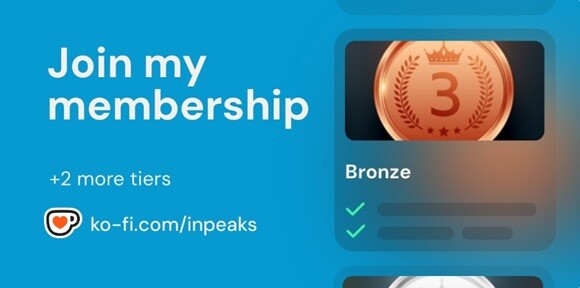You must have experienced it. Some websites, software, and mobile applications instantly draw your attention with their exceptional, interactive visuals and innovative designs. Conversely, due to their mundane and static designs, you do not feel like browsing through a few web applications.
Have you ever wondered why large corporate companies and tech giants like WhatsApp, X, Facebook, or even Google keep changing their logos and transforming the layout of their websites even when those logos have become a symbol of their brand identity?
The answer is they want to provide their customers with a unique and groundbreaking product design that makes them utter the words – “Oh Wow! What a creative and marvelous design.!”
So, what should you do to receive such words of appreciation? Of course, you will look to create a captivating and unique design that resonates with your brand audience, but how will how achieve this goal?
Well, in this article, we are going to discuss and unveil the process of crafting a stellar digital product design that steals the show and becomes the focal point of every user visiting your website or application.
You may have a raw idea running somewhere at the back of your mind. Now, it’s time to digitally transform it into something tangible, something people can touch, feel, and interact with.
Let’s Define Digital Product Design
Digital product design services are a comprehensive process that allows a designer to envision, craft, and refine digital products used for user interaction on websites or mobile applications. It’s a multidisciplinary approach that blends user experience (UX), user interface (UI), interaction design, and more to ensure that the final product isn’t just functional, but also delightful to use.
However, at its core, digital product designs play a significant role in resolving a problem. They are integrated with artificial intelligence and machine learning solutions, which help them understand and analyze user requirements, behavior, and pain points to design an innovative solution that addresses all such issues.
The ultimate goal of any UI/UX designer is to convert a mere concept into a digital experience with comprehensive and strategic planning, extensive research, and continuous iteration to ensure the final product excels the user expectations and keeps them engaging in the tech-driven world.
What Are The Core Components of Digital Product Design Services?
Before delving deeper into the core process of digital product design, it is essential to underline the core components that form the foundation of any UI/UX design.
- User Interface Design (UI) – We start with a user interface design that focuses on the visual elements of the product. It involves creating buttons, icons, menus, and other visual components that users interact with.
- User Experience Design (UX) – If the user interface is the stage where your brand performs, user experience is the standing ovation that it receives from the audience. User experience emphasizes creating a memorable journey with the digital product with seamless interaction, involving research, user personas, wireframing, and usability testing.
- Interaction Design – It deals with creating engaging interfaces that respond to user actions. Examples include designing eye-pleasing animations, transitions, and other interactive elements that enhance user engagement.
- Information Architecture (IA) – Information Architecture is all about structuring and placing your content on the platform in a sophisticated and easy-to-navigate way. The aim is to enable users to search for relevant content or products quickly, leading to enhanced experience and platform usability.
- Visual Design – Visual design is about creating a cohesive look and feel for the product. It includes the use of color schemes, typography, and imagery to create an aesthetically pleasing and consistent design.
The Digital Product Design Process
1. Extensive Research and Discovery
The first and foremost involvement in digital product design is through research, followed by a viable discovery to convert it into an interactive and intuitive solution. Here UI/UX designers must understand the core issue they are trying to solve. They also must be familiar with their target audiences and have a clear vision about what they want to finally achieve.
They can do their research and get the best results by conducting user surveys, interviews, and competitor analysis. Here, we can cite the example of Airbnb where its founders spend a considerable amount of time with hosts and guests initially to understand their needs.
2. Ideation and Conceptualization
Upon gathering the relevant data and understanding the user problem you can move on to brainstorming ideas and initial conceptualization of the product. This phase will require you to show your drawing skills as you may have to create sketches, storyboards, and images to illustrate and visualize your idea.
3. Wireframing and Prototyping
Now that you have an idea of what product you want to design, the next step involves creating meaningful wireframes. Wireframes are basic layouts that outline the structure and functionality of the product. After wireframing, prototypes are created to simulate the user experience.
To understand this better, you can check the example of Instagram where the the founders created a prototype called “Burbn” before launching the application.
4. User Testing and Validation
Testing is an indispensable phase in designing a user-centric and engaging digital product that aims to collect feedback from actual users and identify usability challenges and areas for improvement. Here quality assurance specialists work with UI/UX designers to ensure the product is user-friendly and targeting specific needs of the audience.
The best example to quote here is that of Dropbox, which carried out extensive user testing during its beta phase to improve its application, enhancing its intuitiveness and user retention.
5. Design and Development
After successfully validating the wireframes and prototypes, the designers start with the actual work where they get thoroughly involved in developing high-fidelity and visually appealing product designs that align with their client’s brand. Once the design is complete, the developers commence with the coding process.
For instance, the Coca-Cola Company crafted a user-friendly design using a consistent red color scheme and typography that reflects the brand’s identity.
6. Launch and Iteration
After the product is developed, it’s time to launch. However, the process doesn’t end here. Post-launch, designers, and developers gather user feedback and monitor performance to make necessary iterations. Continuous improvement is key to maintaining a successful product.
Here we can take the example of Twitter (now X), which went through multiple iterations, including the introduction of features like hashtags and retweets, which significantly enhanced user engagement.
Why You Need to Follow the Design Process?
So, now you can ask us why we need to follow the digital product design process. The straightforward answer to this question is that what we have discussed above is not just a series of step-by-step procedures, it is the framework and the right path to create a successful product.
If you see, the process, each step is interconnected with the other and you simply cannot miss out on any phase in the middle. The steps ensure that your final product is feature-rich, user-centric, intuitive, and completely functional, free from errors or security issues.
Final Thoughts
Digital product design is an ongoing journey of discovery, creativity, and iteration. It creates a tangible impact on real-world success. This is the core reason why tech giants like Apple, Google, Microsoft, and IBM, including all other organizations emphasize creating superior digital product designs.
So, are you ready to bring your application or product to life? It’s the best time to invest in digital product design services and allow your business to drive forward by providing futuristic solutions.
You may also like to read,










